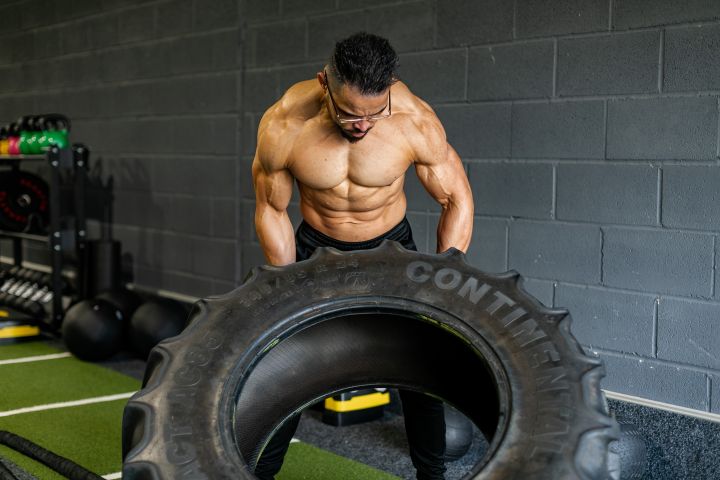In order to get the best muscle building results, you have to train with large weights, even the american college of sports medicine thinks so.

In addition to the popularity of weightlifting in recent years, more and more people are being exposed to big weight strength training, especially women, who are also achieving great results in terms of getting in shape.
However, up to now, there are still many fitness enthusiasts arguing online whether it is better to train with large weights or small weights.
Today, let's find out whether bigger weights or smaller weights are better for muscle building.

"Definition of 'weight'
Everyone's definition of 'weight' is different. For a woman who only does 20 reps or more, anything less than 10 reps may be considered a 'big weight'.
For a powerlifter, anything over 5 reps can be considered a 'small weight'.
So we must provide some definition of 'training weight'.

In the scientific literature, a training weight is defined as a percentage of the maximum weight (1rm) and therefore the 'size' of a training weight is also determined by the percentage of 1rm.
The 'size' of the training weight is not very clear in today's scientific literature, but generally scientists believe that when the training weight is more than 65% of the 1rm it is considered a large weight, and when it is less than 65% of the 1rm it is considered a small weight.
In other words, if my 1rm is 100kg and i choose to train with 50kg, this could be considered 'small weight' training; if i choose to train in the 70kg class, this could be considered 'large weight' training.

Limited practical application of weight training
Although small weights and large weights can achieve similar training results, there are many disadvantages to both in practice.
Starting with small weights, many people think that small weight training is simpler and easier because the weights are light so you don't need to prepare yourself mentally or be afraid of the weight of the barbell, but this is not the case.
Anyone who has done 10rm squats knows that by the time you get to the fifth one, you are already sweating and your legs are sore. If you do 20, this is the equivalent of a super high intensity cardio workout. After 20, you're already out of breath and after the first set, i guarantee you won't want to do a second set. It's not just a compound movement, it's also a stand-alone movement. Try doing a few sets of near-exhaustion biceps for 30 reps, your heart will beat faster, you will sweat and your muscles will become sore, it's not as easy as we think.

This has not only been my personal experience, but scientific studies have also found this to be true, with smaller weight trainers having a higher sense of conscious effort and discomfort compared to weight training.
Therefore, although small weight training can also increase muscle strength, it is not always practical in practice, especially in compound sports.
Conversely, training with too much weight can also lead to problems.

In this study, 20 male university students with training experience participated in an experiment, divided into two groups, one for strength, seven sets of 3rm each, and one for muscle building, three sets of 10rm, where the total training volume, i.e. Total reps x weight, was equal for each group.
From the results, it was shown that although the muscle growth was the same in both groups, the first group trained for more than an hour each time and the subjects also felt more tired and two even dropped out of the experiment due to pain.

Therefore, overweight training may make training longer, leading to more mental and physical fatigue and increasing the likelihood of injury.
Therefore, in practice, if you are training to build muscle, you should choose a training weight of 6-20rm, if it is too heavy, the above situation will occur.

